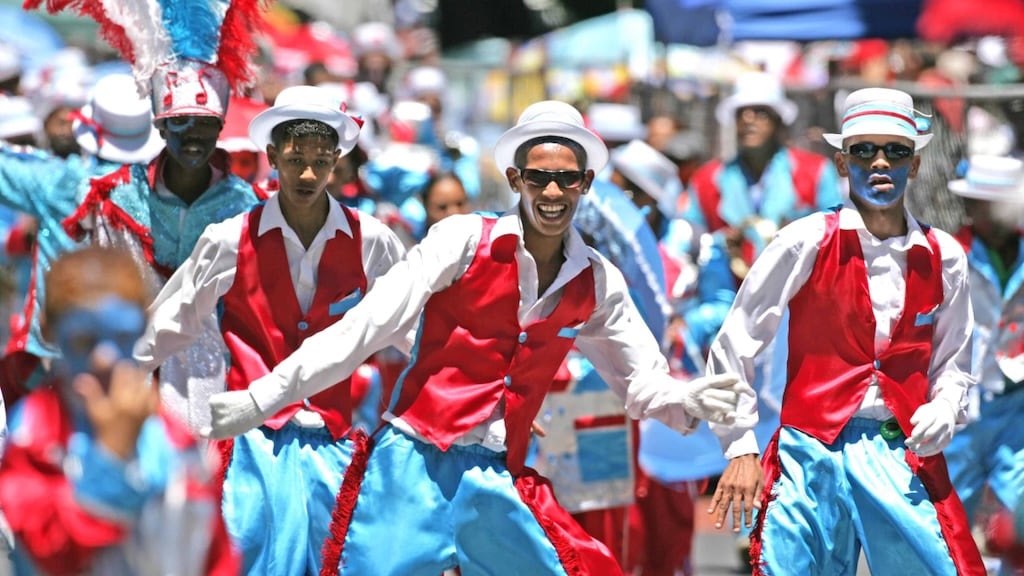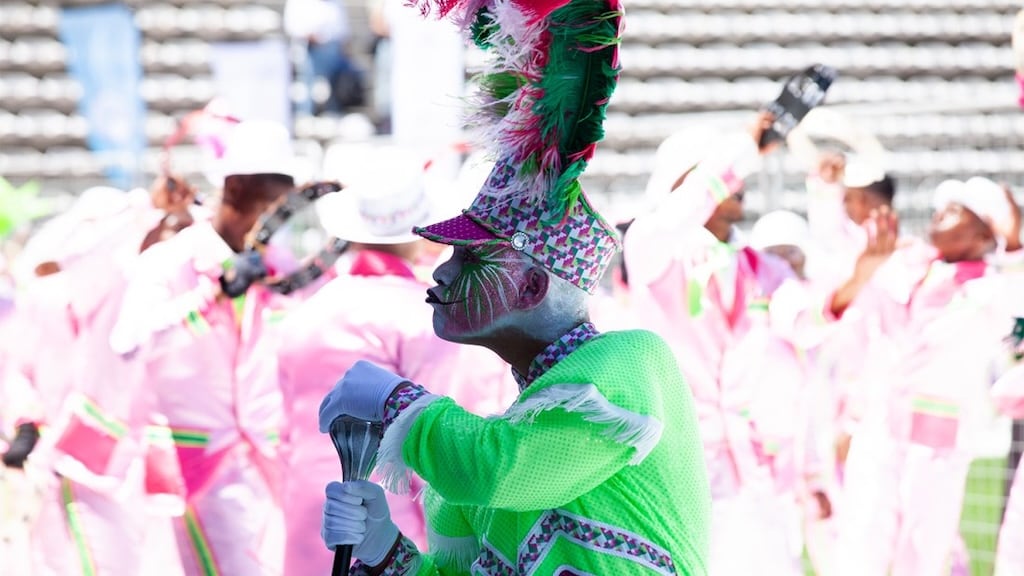Cape Town's Minstrel Carnival
In the midst of South Africa's pulsating Mother City, the Cape Town Minstrel Carnival is a jubilant celebration of freedom, culture and harmony. Every January, more than a hundred minstrel troupes parade through the streets in dazzling attire, performing traditional Cape Malay music and choreographed dances.
Anchored in a rich history, the festival not only delights but also reinforces the ongoing spirit of reconciliation and community.


Historical Background
The carnival, known locally as “Kaapse Klopse,” traces its origins to the early 19th century, when emancipated slaves and descendants of the indigenous Khoi and Malay communities celebrated the New Year with song and dance in secret courtyards. Despite colonial restrictions on public gatherings, they used simple sticks called “klopse” to keep rhythm. By 1862, brass bands and elaborate costumes had transformed the carnival into a structured procession embodying newfound cultural pride.
During periods of social unrest, figures like community leader Abraham Isaacs and Bishop Robert Gray provided tacit support, allowing the festival to thrive. After the end of Apartheid, official patronage from the City of Cape Town and renewed sponsorships secured the carnival's status as a flagship event celebrating resilience and modern creativity.
Typical Activities
On parade mornings, rehearsals at Green Point Stadium give way to vibrant street spectacles. From there, the procession follows a five-kilometre route along De Waal Drive — past the Castle of Good Hope — before culminating at the Grand Parade outside City Hall. Highlights include:
- Opening March: Troupes don sequined jackets, towering feathered headdresses and coordinating sashes
- Drumming Competitions: Ghoema percussionists vie for best rhythm and innovation
- Choreography Awards: Judges recognise top troupe formations and themed performances
- Kaart Trek: Intimate evening shows in community halls blending traditional and contemporary arrangements
- Workshops & Markets: Hands-on drumming lessons, Cape Malay cooking demonstrations and stalls selling beadwork and textiles
Traditional Customs
The carnival blends Cape Malay heritage with Victorian and Mardi Gras influences:
- Ghoema Drumming: Named for the barrel drum at its core, ghoema music features rolling bass lines and crisp accents
- Elaborate Costumes: Inspired by 19th-century parlour fashion, outfits boast sequins, ostrich feathers and hand-stitched beadwork
- Call-and-Response Songs: Lyrics in Afrikaans, Malay and English reflect the city's multicultural tapestry
- Cakewalk Contest: A reinterpretation of the European court dance infused with local improvisation
- Culinary Delights: Vendors offer samosas, koesisters and bobotie canapés
What to Expect
For first-time visitors:
- Arrival Time: Aim to arrive by 7 AM to secure a good viewing spot
- Route & Footwear: The parade covers roughly 5 km; comfortable shoes are essential
- Transport: Use the MyCiTi bus or ride-share services; parking is limited
- Accommodation: Book early in the City Bowl or Sea Point, as rooms fill up fast in December
- Seating Options: Free street-side viewing or ticketed reserved seats under shaded stands
- Cultural Tours: Guided walking tours of Bo-Kaap offer insights into local history and architecture
Whether you choose to photograph the procession, join a dance circle or sample local snacks, the carnival guarantees a family-friendly environment and unforgettable memories.


Conclusion
The Cape Town Minstrel Carnival is more than a festival — it's a living testament to South Africa's journey through adversity, celebration and unity. Its exuberant displays of music, dance and costume illustrate the power of cultural expression to heal divisions and bring communities together.
Circle January on your calendar and prepare to experience a tradition that dazzles the senses and lifts the spirit.